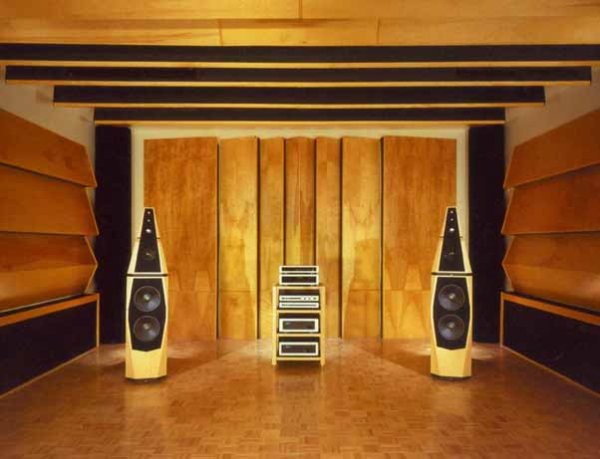this is not really a diffusive room... You just have non parallel walls.... (which is already an improvement vs a normal square room)
A really diffusive room would use quadratic diffusers, or even more advanced one like the Wing diffusers developed by SMT. Only in this case you can make sure that spectral content of diffused sound is fully coherent with direct sound (which is key for a great sound, see explanation below). To my knowledge, SMT diffusers are the most effective one on the market. I imported them from Sweden, even if I live in Asia.
Also, by definition a room based on diffusion cannot be overdamped!
If your budget is limited, nothing beats a room with some basic absorption panels in the corner and first point of reflection. I had more than 30 realtraps in my previous rooms, they worked well. Great help to limit room resonance, but you need to be careful to use traps which are reflective above a certain frequency or the room will be too dead. Realtraps are a very good value for money. Tube Traps are also very good, but more (too) pricey.
Rooms based on diffusion principles give a much better image. You also get more transparency, and liveness. It is like if the full room disappears, provided that you use good quality diffusers. Nothing beats diffusion, but it needs to be used extensively to be effective, so it shouldn't be the solution of choice if your budget is limited.
For those who are interested to better understanding psychoacoustics and why some rooms are superior to others, I recommend to read "sound reproduction" by Floyd Toole. The Linkwitz 2007 AES Convention paper is also a very interesting read (
http://www.linkwitzlab.com/AES'07/AES123-final2.pdf). My room philosophy is based on the precedence principles: when you delay enough reflections and maintain a spectral content coherent with direct sound, the reflections are not heard anymore by the brain: you hear source material with more clarity, and the halo of the reflection gives additional sense of spatiality.
Of course, this is possible only with very good diffusers.
For bass, I have 1 large band fiberglass absorber in the ceiling, which will be tuned based on how much absorption I need. But room nodes are mainly treated with my 27 Helmholtz resonators, at all junctions between ceiling and walls, walls and walls, floor and walls. They absorb on a narrow band, and are fine-tuned based on room measurements.
Before going for a SMT room, I have heard several dedicated rooms (including Mike Lavigne's Rives room and many other Rives room). Choice of room is the most important... even more than choice of speaker. So how come people spend 10 times more in their audiophile tweaks than in the design of their room?


